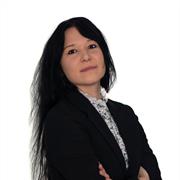
Agnieszka Kiejziewicz
Lecturer, Communication
Details
-
College: School of Communication & Design
-
Department: School of Communication & Design
-
Campus: Saigon South Campus Vietnam
-
agnieszka.kiejziewicz2@rmit.edu.vn
-
ORCID: 0000-0003-2546-6360
Open to
- Masters Research or PhD student supervision
About
Agnieszka Kiejziewicz holds a PhD in the Arts and Humanities (with an emphasis on Film and Media) from the Jagiellonian University in Poland. She is the author of academic publications and monographs articles concerning Asian film, media, culture and European art. For the past few years, she has been working at the University of Gdansk, Poland, teaching Asian cinema, New Media Technologies, Academic Writing and Film Analysis. Agnieszka also developed the Andrzej Wajda Film Center project at the University of Gdansk, connecting film culture with industry partners and starting an internship scheme for students interested in film culture. She has cooperated with cultural institutions, art galleries, and foundations.
Industry Experience
- Andrzej Wajda Film Center, University of Gdańsk, Poland. Film Center administration (2021-2022)
- Curator of the intermedia installation “The Language of Stray Bodies”, together with intermedia artist Elvin Flaming and his research team. The installation was displayed as a part of “Twilight of the Anthropocene” exhibition at The Academy of Fine Arts, Gdańsk, Poland. The installation got the exhibition first prize and the first prize on WRO Media Art Biennale 2021: REVERSO. (September 2020 – November 2020)
- Curator of the project exhibition and collection “Cyberpunk is now!” Warsaw – Wroclaw (Poland) (October 2019 – 2020
- Visiting curator of the Japanese part of the exhibition “Janusz Kaniewski,” Gdynia (Poland), Gdynia City Museum; exhibition dedicated to design works of a Polish artist Janusz Kaniewski.(November 2019 – September 2020)
Industry Experience
- Andrzej Wajda Film Center, University of Gdańsk, Poland. Film Center administration (2021-2022)
- Curator of the intermedia installation “The Language of Stray Bodies”, together with intermedia artist Elvin Flaming and his research team. The installation was displayed as a part of “Twilight of the Anthropocene” exhibition at The Academy of Fine Arts, Gdańsk, Poland. The installation got the exhibition first prize and the first prize on WRO Media Art Biennale 2021: REVERSO. (September 2020 – November 2020)
- Curator of the project exhibition and collection “Cyberpunk is now!” Warsaw – Wroclaw (Poland) (October 2019 – 2020
- Visiting curator of the Japanese part of the exhibition “Janusz Kaniewski,” Gdynia (Poland), Gdynia City Museum; exhibition dedicated to design works of a Polish artist Janusz Kaniewski.(November 2019 – September 2020)
Academic positions
- Academic teacher (non-tenure track); Film and visual culture
- University of Gdańsk
- Department of Philology
- Gdańsk, Poland
- 2020 – 2022
- Non-tenure track lecturer
- Jagiellonian University
- Faculty of Management and Social Communication, Institute of Audiovisual Arts
- Krakow, Poland
- 2016 – 2018
Non-academic positions
- Film Center administration
- University of Gdańsk
- Andrzej Wajda Film Center
- Gdańsk, Poland
- 2021 – 2022
- Academic cultural events administrator
- University of Gdańsk
- Academic Cultural Center “Alternator”.
- Gdańsk, Poland
- Jan 2020 – Sep 2021
- Film educator
- New Horizons of Film Education
- Poland
- Oct 2018 – Mar 2020
Teaching interests
- Cultural Studies
- Critical Media theory
- Games Narratives
- Critical Media theory
- Games Narratives
Research interests
- Game design
- Games archives
- Asian film
Contemporary art
Future cities and future narratives
VR art and somatic film experience